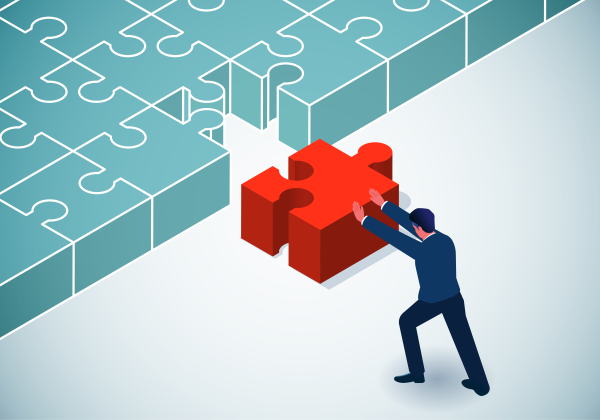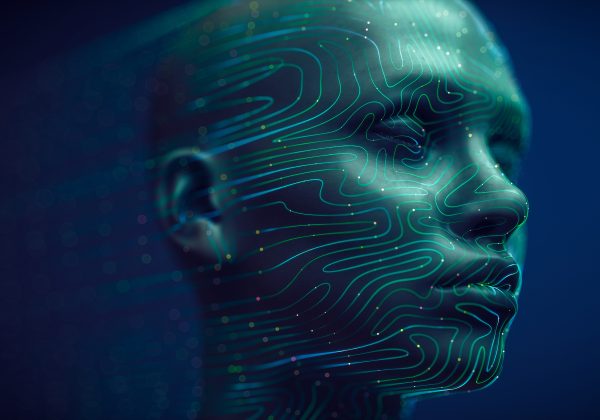Beyond the Algorithm: How AI Frees Us to Be More Human
The key to success is repurposing time freed up by AI to focus on higher-value tasks rather than routine ones.
Following the launch of OpenAI’s ChatGPT, artificial intelligence has gained tremendous attention, rapidly increasing the use of generative AI systems. These tools allow users to generate content such as art, websites, and even answers for homework assignments.
However, this rapid adoption has raised concerns about legal implications, intellectual property, and the spread of misinformation. Many users see AI as an advanced search engine, but this view underestimates its potential. To fully harness AI, there’s an urgent need for training on how to prompt, use, and integrate AI effectively.
Currently, AI can support users through five main functions: rational thought based on past knowledge, content creation, information synthesis, productivity automation, and emotional support. Yet, there is a growing fear of AI—mainly because people struggle to imagine how it can fit into their work without taking over their jobs. The key to success is repurposing time freed up by AI to focus on higher-value tasks rather than routine ones.
A More Optimistic Future: Redefining Work with AI
Much of the fear surrounding AI stems from a lack of imagination about the future of work. AI’s ability to automate repetitive tasks can be compared to past technological innovations, like email replacing handwritten letters. While AI may free up 20 hours a week for some, the challenge lies in how workers will use that extra time. Historically, technology has reduced manual labor, giving humans more time and thus a new opportunity for creativity and innovation, when they could seize it.
Just like past disruptions, AI will enable people to focus on more strategic tasks, allowing organizations to become more creative and innovative. It’s not a question of whether AI will take jobs but how humans can use AI to enhance their roles.
The integration of AI into daily life is inevitable. Some fear that companies will use AI purely to outcompete rivals, disregarding natural resources, human labor, and quality of life. There’s also a risk of AI producing misleading data, leading to poor decision-making, mass plagiarism, and accelerated “idiotication” of the workforce—where people become less motivated to learn and acquire knowledge. Unemployment could rise if AI replaces many jobs, leading to social unrest and a sense of worthlessness in the workforce.
However, the future does not have to be bleak. By preparing and educating ourselves, we can harness AI’s potential for good, while maintaining human control over its development.
If we embrace AI as an opportunity to reinvent work, we can create a future where AI supports human creativity and problem-solving. It’s crucial to rethink our definition of work and recognize that AI’s strengths lie in performing tasks that require data processing and analysis. AI is excellent at repetitive tasks, but humans excel in creative, strategic thinking, and decision-making.
Philosopher Emmanuel Levinas reminds us that human beings cannot be reduced to categories, and our ability to respond to situations is unique and unpredictable. AI, on the other hand, operates within pre-existing paradigms and is limited by its programming. This distinction highlights the importance of human intervention in AI-driven processes, as humans bring moral, ethical, and creative judgment that machines lack.
Creating Fit-for-AI Organizations
For organizations to thrive in the AI era, early training and development are essential. A key challenge is overcoming the mixed feelings of optimism and pessimism about AI. Many employees fear that AI will take over their jobs, leading to stress and tension in the workplace. However, retraining employees to leverage their uniquely human skills—such as critical thinking, creativity, adaptability, and social competencies—can reduce these concerns and boost productivity.
Organizations need to implement a baseline of AI training, no matter employees’ experience levels. Those new to AI can start by experimenting with conversational AI, while more advanced organizations should focus on strategic management and customer experience improvements. Experienced companies can lead by example, publicly sharing their AI strategies to demonstrate the benefits of integrating AI.
The key skill needed in the AI era is critical thinking. Companies must shift training programs to develop employees’ ability to generate innovative ideas and make informed decisions alongside AI. If organizations fail to prepare their workforce, they risk decreased productivity and the potential for mass unemployment.
To successfully integrate AI into the workplace, employees must be involved in the process. Start small by automating routine tasks and gradually expand the use of AI. Show employees how AI can elevate, not replace, their roles by allowing them to focus on higher-level tasks like customer satisfaction and building relationships.
To normalize AI use, highlight its successes and demonstrate that AI is being monitored and controlled. Think of AI integration like teaching someone to ride a bike: start with small steps, and eventually, resistance will transform into eagerness as employees become comfortable with the technology.
Incentivizing Critical Thinking Over Activity
As AI becomes more integrated into the workplace, organizations must rethink how they reward employees. Traditional metrics of productivity, such as effort and timeliness, will no longer be as relevant. Instead, companies should focus on rewarding critical thinking, creativity, and innovation. Performance bonuses can be based on how well employees use AI to improve outcomes, and those who develop new AI-driven innovations should be recognized with leadership roles and potential financial incentives.
Additionally, making AI training sessions paid will encourage more employees to participate, fostering a culture of continuous learning and innovation, including:
- Creating a Culture of Innovation
Developing a workplace culture that encourages critical thinking and innovation is key to successful AI integration. Companies like IKEA have already demonstrated how empowering employees to take on creative roles, while using AI to handle routine tasks, can boost revenue and improve workplace culture. By encouraging employees to pursue projects aligned with their interests, organizations can increase motivation, productivity, and employee engagement. - Responsible Use of AI
Responsibility is a human trait, and it’s up to us to ensure AI is used ethically. AI should never be allowed to make decisions on its own, as it lacks the moral compass and situational intelligence that humans possess. We must guide AI to drive desired outcomes while ensuring that human values remain at the forefront. - Maintaining Accountability
As AI becomes more prevalent, organizations need clear guidelines on how to hold both humans and AI accountable for mistakes. If an AI-generated outcome is inaccurate, where does the responsibility lie? Companies must establish systems for monitoring AI use and ensuring that it’s applied responsibly. AI-generated information can sometimes be misleading, making it crucial for employees to understand the technology’s limitations and cross-check sources. Clear guidelines will help prevent misuse and ensure that AI remains a tool for good, rather than a source of harm.
A Call for Action
The rapid rise of AI presents both challenges and opportunities. As we move forward, it’s essential to reflect on what it means to “be human” in an AI-driven world. We must identify the traits that make us human—creativity, critical thinking, moral judgment—and ensure that these remain central to our work and interactions.
By embracing AI as a tool to enhance, not replace, our roles, we can create a future where the best of being human is combined with the efficiency and capabilities of AI. This will require thoughtful integration, continuous learning, and a commitment to using AI responsibly.
In conclusion, the success of AI in the workplace hinges on how well we prepare, train, and support employees in adapting to this new technology. By creating a culture of innovation, encouraging critical thinking, and maintaining accountability, we can harness the power of AI while preserving the best aspects of being human.



